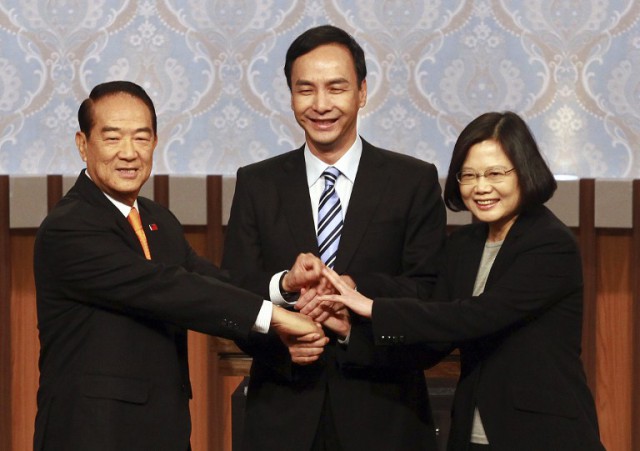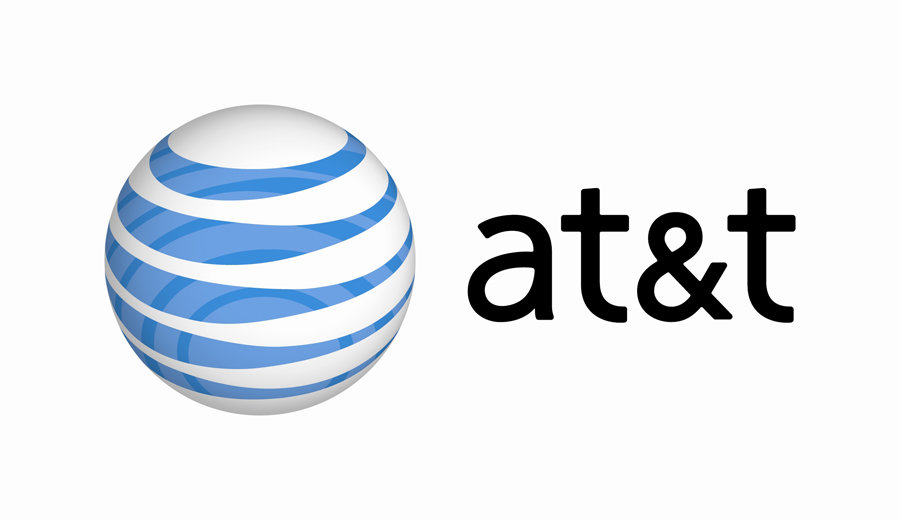
The three candidates running for President of the Republic of China are: James Soong from the People First Party (PFP) (L), Eric Chu from the ruling Kuomintang (KMT) party (Center), and Tsai Ing-wen from the Democratic Progressive Party (DPP) (R).
Taiwan’s three presidential candidates, appearing in a nationwide debate on Sunday, promised to deliver improved High Speed Internet in the Republic of China, with some candidates committing to give broadband away for free to low and middle-income families.
Taiwan is making broadband expansion and improvement a top national priority, as the country races towards delivering gigabit wired broadband and 5G wireless service. The government wants to boost the country’s broadband ranking, now 33rd in the world.
Bringing speeds up while reducing broadband bills is the goal of Eric Chu, the candidate from the ruling Kuomintang (KMT) party. During his terms as leader of New Taipei and Taoyuan County, Chu presided over a major expansion of Internet penetration rates. Chu believes the next step is to make broadband service free of charge for low/middle-income residents and deliver nationwide free Wi-Fi to every centimeter of Taiwan.
Internet providers would still profit from selling faster access to customers willing to pay for it, but Chu’s policies continue a theme that broadband access is a basic human right, a position increasingly popular in the country. Voters appeared skeptical of Chu’s claims, however, because the KMT has garnered a reputation of being in bed with big business during its last two terms in office. But that has not stopped Chu from criticizing telecom executives for not doing more to invest and eventually offer next generation 5G wireless service in Taiwan.
James Soong, from the People First Party — considered to have a close (but frequently tense) alliance with the KMT — predictably agreed with Chu, but also wants Taiwan to do more to protect Internet privacy and online safety. Soong wants to completely scrap the country’s legacy copper wire telecommunications infrastructure and replace it with fiber optics, delivering fiber service to every home and business in Taiwan. With a fiber upgrade, Soong is convinced Taiwan will achieve his goal of top-10 broadband status.
Tsai Ing-wen from the Democratic Progressive Party (DPP) said when private companies don’t deliver, it is government’s responsibility to address the digital divide, by making high quality service affordable and fast. Taiwan’s telecom companies are paying close attention to the DPP candidate because polls make her the favorite to become the next president of Taiwan, after the election on Jan. 16.
“The use of broadband Internet service should be part of the people’s basic human rights,” she said. “It is also important to narrow the digital divide to improve educational opportunities for children in remote areas and develop children’s digital capabilities.”
With broadband being treated as a high priority issue in the presidential race, Taiwan’s largest broadband provider, Chunghwa Telecom – 中華電信, has announced the first commercial deployments of G.fast technology – the newest generation of DSL – across Taiwan.
Israeli chipmaker Sckipio demonstrated G.Fast technology at CES 2016 in Las Vegas this week, claiming it is faster than traditional DSL and cable broadband. In a limited demonstration, the company demonstrated download speeds achieving 750Mbps over traditional copper wire networks, about 50 times faster than average broadband speeds. Sckipio promised G.Fast technology will debut in the United States later this year.


 Subscribe
Subscribe If residents in rural Kentucky want Time Warner Cable to offer broadband service, they better be prepared to pay for it.
If residents in rural Kentucky want Time Warner Cable to offer broadband service, they better be prepared to pay for it.


 In a sign federal regulators are taking the behemoth merger of Charter Communications, Time Warner Cable, and Bright House Networks seriously, the FCC today announced it was
In a sign federal regulators are taking the behemoth merger of Charter Communications, Time Warner Cable, and Bright House Networks seriously, the FCC today announced it was  AT&T customers reaching out for customer service are likely to encounter dysfunctional call center employees that will lie, cheat, and scam customers just to meet their monthly targets, while three-quarters of the rest rely on high-powered antidepressants and anxiety medication just to get through the day.
AT&T customers reaching out for customer service are likely to encounter dysfunctional call center employees that will lie, cheat, and scam customers just to meet their monthly targets, while three-quarters of the rest rely on high-powered antidepressants and anxiety medication just to get through the day. “Unfortunately, we have no way of knowing if this is an employee of our company,” AT&T’s response begins. “But the picture painted is not the experience we create, promote or endorse. We have some of the best call center employees in the industry. We set expectations and limit the offers they can use. But we also provide new agents with 12 weeks of intensive training — with a focus on keeping customers with integrity and with offers based on needs determined during the conversation.”
“Unfortunately, we have no way of knowing if this is an employee of our company,” AT&T’s response begins. “But the picture painted is not the experience we create, promote or endorse. We have some of the best call center employees in the industry. We set expectations and limit the offers they can use. But we also provide new agents with 12 weeks of intensive training — with a focus on keeping customers with integrity and with offers based on needs determined during the conversation.”